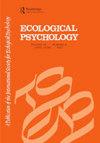研究人们在感知他人最大垂直自由度到达高度时所拾取的变量,为辅助机器人的设计提供信息
IF 1.7
3区 心理学
Q3 PSYCHOLOGY, EXPERIMENTAL
引用次数: 0
摘要
我们的目标是设计辅助机器人,以类似于人们如何感知他人的能力。为此,两个实验调查了人们在感知演员的最大垂直自由度达到高度时选择的变量。在实验1中,点光显示描绘了移动的演员,或高或矮,并在他们的整个身体(头、肩膀、肘部、手腕、手、臀部、膝盖和脚踝)、上半身(头、肩膀、肘部、手腕和手)、下半身(臀部、膝盖和脚踝)或脚踝上放置了标记。参与者指示实验者调整物体的高度,使其刚好够得着。实验二是相同的,除了演员移动或静止。在两个实验中,全身条件下的判断误差与上半身和下半身条件下的判断误差差异不显著,但与脚踝条件下的判断误差差异显著。在实验2中,当演员移动和静止时,结果都是一样的。这些结果表明,参与者可能会注意到物体的高度与演员的高度之间的关系。讨论了人们如何感知他人的最大垂直自由度达到高度以及如何为辅助机器人设计提供信息的含义。本文章由计算机程序翻译,如有差异,请以英文原文为准。
Investigating What Variables People Pick Up When Perceiving Other People’s Maximum Vertical One Degree-of-Freedom Reach Heights to Inform the Design of Assistive Robots
Abstract We aim to design assistive robots that perceive people’s affordances in ways that are similar to how people perceive other people’s affordances. Toward that end, two experiments investigated what variables people pick up when perceiving actors’ maximum vertical one degree-of-freedom reach heights. In Experiment 1, point-light displays depicted actors who moved, were either tall or short, and had markers placed on either their whole body (head, shoulders, elbows, wrists, hands, hips, knees, & ankles), upper body (head, shoulders, elbows, wrists, & hands), lower body (hips, knees, & ankles), or ankles. Participants instructed the experimenter to adjust an object’s height so that it was just reachable. Experiment 2 was identical except actors moved or were still. In both experiments, judgment error for the Full Body condition was not significantly different from that for the Upper or Lower Body conditions, but was significantly different from that for the Ankles condition. In Experiment 2, that result replicated when actors moved and when they were still. These results suggest participants may have picked up object height in relation to actor height. Implications about how people perceive other people’s maximum vertical one degree-of-freedom reach heights and how that might inform assistive robot design are discussed.
求助全文
通过发布文献求助,成功后即可免费获取论文全文。
去求助
来源期刊

Ecological Psychology
PSYCHOLOGY, EXPERIMENTAL-
CiteScore
3.30
自引率
10.50%
发文量
8
期刊介绍:
This unique journal publishes original articles that contribute to the understanding of psychological and behavioral processes as they occur within the ecological constraints of animal-environment systems. It focuses on problems of perception, action, cognition, communication, learning, development, and evolution in all species, to the extent that those problems derive from a consideration of whole animal-environment systems, rather than animals or their environments in isolation from each other. Significant contributions may come from such diverse fields as human experimental psychology, developmental/social psychology, animal behavior, human factors, fine arts, communication, computer science, philosophy, physical education and therapy, speech and hearing, and vision research.
 求助内容:
求助内容: 应助结果提醒方式:
应助结果提醒方式:


